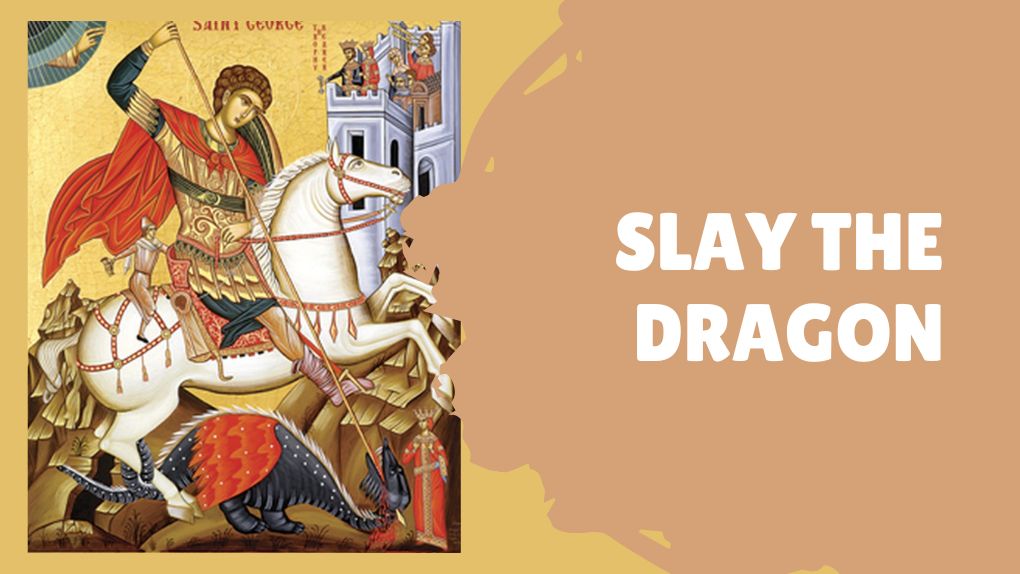If you are a Game of Thrones fan like me, then Sundays are an occasion for double joy. In the morning, we get to attend the Badarak, spend time with our community, and in the evening, we get to enjoy a fresh episode of House of the Dragon – the HBO sequel to the Game of Thrones. I think it is one of the best shows ever created, filled with unexpected storyline turns and twists and stunning creativity. It is a story about the Iron Throne and the Seven Kingdoms, human greed, trust and betrayal, lust and love, power, politics and, of course, fire-breathing, terrifying but also very loyal dragons who guard the Iron Throne and its descendants.
Interestingly, in the ancient Armenian culture, dragons were seen as guardians. Vishabakars (dragon stones) were placed at strategic locations essential for life, survival, and peace, such as water springs and the borders of our country.
Yesterday, we commemorated St. George, who is the patron for our church. St. George is one of the most beloved saints, often called the great martyr, victory-bearer, and wonderworker. He is usually depicted and recognized as the saint who slayed the dragon. However, this is primarily influenced by Jacob of Voragine’s 13th-century Golden Legend fictional work and has nothing to do with the church tradition and hagiography. As intriguing as slaying dragons may sound, it is important to remember that this is not why St. George was crowned and accepted as a saint. Instead, it was his victory over the inner dragon of doubt and disbelief amid persecution and threat of death that earned him this precious recognition and respect.
One of the desert fathers, St. Macarius (295-392 A.D.), wrote that the human heart is a small vessel that contains dragons, lions and poisonous beasts. But it also contains God, the angels, the life, the light and the kingdom (see H.43.7). We know this is true and there is divine holiness and presence in our hearts because our Lord himself taught us that the kingdom of God is within us (Luke 17:21). And we know there are dragons, demons and darkness in human hearts because so much of the misery, suffering and torment that humanity has experienced – wars, violence, genocides and mass killings, destruction, racism, abuse, slavery, poverty and injustice – are not naturally occurring phenomenon, but born out of the darkness of the human heart.
Speaking with God from the Depths of the Heart (ի խորոց սրտի խօսք ընդ աստուծոյ). This is how St. Gregory of Narek starts each of his prayers. It takes genuine faith and tremendous courage to step into the depths of our hearts because that is one place where most people will do everything not to step foot in it. One might conquer the world and tumble kingdoms but have no control and conduct over his heart, thoughts and words. One might acquire all the knowledge and wisdom of this world but not know himself and the secret depths of his heart.
The story of St. George is a reminder that next to all the beauty and blessings with which the Lord filled our world, there are also irritation, dark and brutal evil powers. Evil has no power over the faithful children of God unless we lay our guard down and let the gates of our hearts open for it to spread in. This is why it is so important to follow the example of the great saints by periodically entering the dark chambers and the depths of our hearts like St. Gregory and, following the footsteps of St. George, confront, slay and repel every demon, dragon and form of darkness and unholiness that prevent us from becoming and being everything God created and called us to be.


